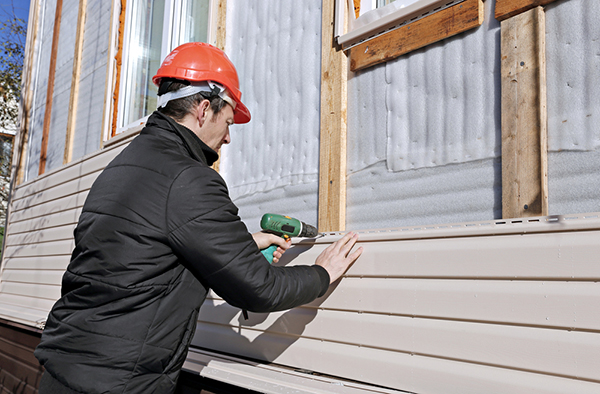How to install vinyl siding while avoiding common application errors
Author: Michael Russo | June 26, 2025
With vinyl siding dominating the residential cladding market for the last several decades, you would think that application errors and callbacks would be history by now.
Actually, just the opposite is true. According to the Vinyl Siding Institute (VSI), installation errors continue to be a problem for siding contractors. While product quality and application techniques for vinyl siding have improved dramatically over the years, the experience level of the average installer has not always kept pace. Here's how to make sure you know how to install vinyl siding properly if you are going to be offering this service to your customers.

Subcontracting and Certification
One way siding companies can improve quality control on residential installations is to avoid giving subcontracting work to less-qualified installers. Contractors should also train workers on industry-recognized installation standards, such as ASTM D4756.
Siding manufacturers have put a greater emphasis on how to install vinyl siding by introducing contractor programs that recognize and reward a high level of professionalism and proficiency when installing vinyl siding.
More recently, VSI has also supplemented its long-standing Certified Installer Program with online, e-learning module certifications. Candidates are now able to visit the VSI website and take courses at a time convenient for them.
Installation Tips From the Experts
Preparation is key before installing even a single piece of siding. Remember, siding is only as straight and stable as what lies underneath it. Residing, strapping or removing original siding that's uneven may be necessary.
For new construction, siding applicators should avoid using green lumber as the underlayment since it can warp as it dries.
Coping With Expansion and Contraction
Like most building materials, vinyl siding swells during hot weather and shrinks in the cold. To avoid having siding that cracks or shifts over time, installers should remember these key tips from VSI's interactive installation manual:
- For nailing: Apply fasteners and nails to the center of the nailing slot. Installed panels should move freely from side to side. Allow 1/32" clearance (about the thickness of a dime) between each nail head and the siding nailing hem, rather than fastening nails too tightly. Increase that clearance to 3/8" if you're installing in temperatures below 40º F. Do not staple or face-nail through vinyl siding.
- For alignment: Push up lightly along the bottom of each siding panel until it locks with the full length of the piece below it. Check the panels' horizontal alignment every few rows to make sure the siding is hanging straight and level on the wall. Always check for panel alignment above doors and windows and around corners.
Reducing Moisture Intrusion
According to VSI, moisture intrusion is the single most common problem contractors experience after installing vinyl siding.
VSI recommends installing flashing such as aluminum coil stock around windows, doors, inside and outside corners, and st the intersection of walls and roofing. The most important tip to remember when installing flashing is that it should extend past the nail flanges of the window (or any accessory) to prevent water infiltration. The flashing must also be long enough to direct water over the nail flange of the last full course of siding.
With this in mind, siders should first apply the flashing on the underside of the window, then to the sides of the window (making sure to overlap the bottom flashing) and, finally, to the top of the window.
Being careful to block out moisture is even more important when you're working on installations in coastal areas, some of which may have building codes that place stringent performance requirements on cladding. Polymeric products, such as vinyl siding, are good cladding options because of their innate ability to handle more extreme weather conditions.
If you offer siding to your roofing customers, it's your responsibility to ensure a quality installation by properly training your crew and preparing your materials.